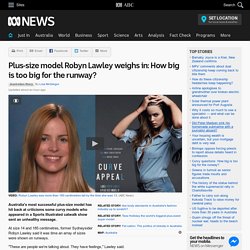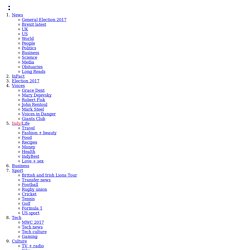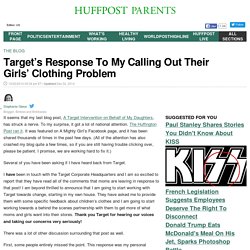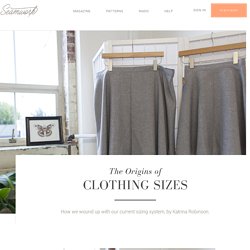

Plus-size model Robyn Lawley weighs in: How big is too big for the runway? Updated Australia's most successful plus-size model has hit back at criticisms some curvy models who appeared in a Sports Illustrated catwalk show sent an unhealthy message.

At size 14 and 185 centimetres, former Sydneysider Robyn Lawley said it was time an array of sizes were shown on runways. "These are people we're talking about. They have feelings," Lawley said. "I've met all the girls who did that catwalk. NSW Australian Medical Association president Dr Brad Frankum last week claimed the use of unhealthily overweight models was, "sending a message that it's OK to be obese or severely overweight because it's the normal state of being but in fact you are putting yourself at risk". Dr Frankum's comments fired up debate on social media with one woman asking him to "please stop criticising obese people" and another woman saying she was "disgusted".
They were finalists in a contest vying for a photoshoot in an upcoming swimwear edition. Obese models likened to smoking on the runway. Real Women Who Show Why Clothing Sizes Are Completely Absurd. Which of the seven types of breasts highlighted by a lingerie firm do you have? A lingerie firm has highlighted and catered to the fact that all women’s bodies are unique, by identifying seven different types of breasts.

Bras are generally fitted according to the width of the woman’s chest and how far her breasts protrude. But the size guide on the ThirdLove website also takes into account the breast’s other characteristics, such as length and fullness. The illustrations on the firm’s "Breast Shape Dictionary” depict a range of breast types, and is intended to help women choose a bra that best suits her body. The most important plus-size moments in fashion The seven type include the “Round” breast, which is equally full at the top and bottom and the “East West” where nipples face outwards.
“Side Set” describes breasts with a wide space inbetween; while breasts that are different sizes are called “Asymmetric”. ThirdLove’s Breast Shape Dictionary is the latest attempt by lingerie companies to acknowledge that women’s bodies vary. Women's Clothing Sizes Are Complete BS. Target's Response To My Calling Out Their Girls' Clothing Problem. It seems that my last blog post, A Target Intervention on Behalf of My Daughters, has struck a nerve.

To my surprise, it got a lot of national attention. The Huffington Post ran it. It was featured on A Mighty Girl’s Facebook page, and it has been shared thousands of times in the past few days. (All of the attention has also crashed my blog quite a few times, so if you are still having trouble clicking over, please be patient. I promise, we are working hard to fix it.) Several of you have been asking if I have heard back from Target. I have been in touch with the Target Corporate Headquarters and I am so excited to report that they have read all of the comments that moms are leaving in response to that post!
Seamwork Magazine. The Origins of Clothing Sizes At one time or another, most of us have found ourselves in a changing room, tugging at ill-fitting jeans or frowning at a snug top.

We blame ourselves, our shape, and our genetics. But these accusations may be mislaid. After all, very few of us are a perfect fit for ready-to-wear sizing, and even if we find one brand that works for us, that rarely translates to other brands or stores. At least sewing patterns allow us to customize sizing to create a perfect fit. But where did our sizing system even come from, and whose proportions are they based on? Made-To-Measure Before mass production clothing there was made-to-measure, where garments were tailored to specifically fit each customer. Ready-to-wear clothing first began with military uniforms for men in the 1800s, eventually expanding into the domestic market. Manufacturers were keen to adapt to this changing market, but sizing was a major problem. The First Attempt Unfortunately, the data pool was skewed. What Size Am I?
One Model Tried On 10 Different Pairs Of Size 16 Jeans And This Is What They Looked Like. A Different Size 8 for Each Designer. The absurdity of women’s clothing sizes, in one chart. It's called fashion, look it up.

(Andrew Toth/Getty Images) Here are some numbers that illustrate the insanity of women's clothing sizes: A size 8 dress today is nearly the equivalent of a size 16 dress in 1958. And a size 8 dress of 1958 doesn't even have a modern-day equivalent — the waist and bust measurements of a Mad Men-era 8 come in smaller than today's size 00. These measurements come from official sizing standards once maintained by the National Bureau of Standards (now the National Institute of Standards and Technology) and taken over in recent years by the American Society of Testing and Materials. Data visualizer Max Galka recently unearthed them for a blog post on America's obesity epidemic. Centers for Disease Control and Prevention data show that the average American woman today weighs about as much as the average 1960s man.
Sadly, they failed.